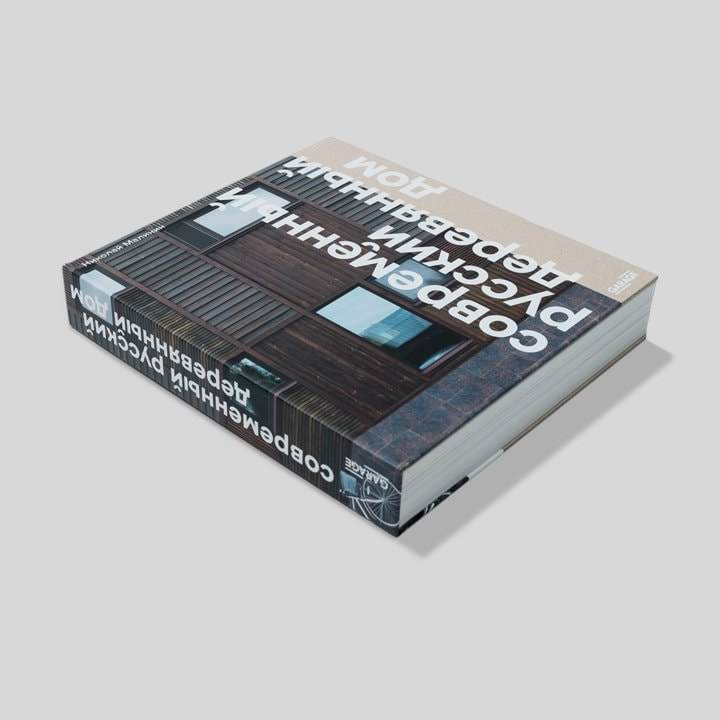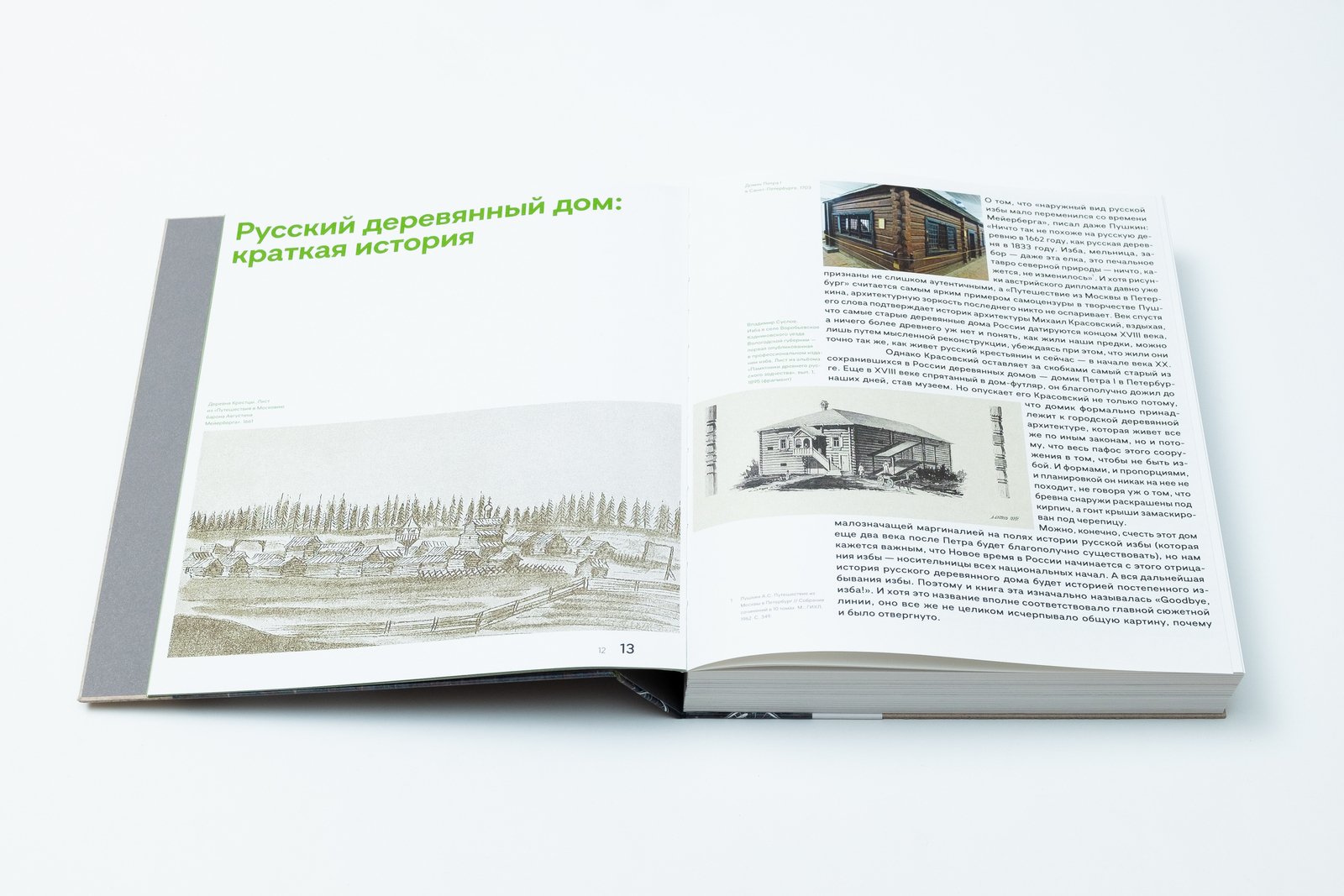The book introduces the best wooden houses built in Russia over the past two decades.
The book by architectural historian Nikolay Malinin features 100 wooden houses—a selection of the best buildings designed by Totan Kuzembaev, Nikolay Belousov, Alexander Brodsky, Alexey Rosenberg, and other contemporary Russian architects. With a separate chapter devoted to each construction, the publication can be viewed as a practical guide for those who want to build a wooden home for themselves. However, most of the houses featured in the book are so unique that they can be labeled artworks rather than a "catalogue of paradigmatic designs." Furthermore, the chronological arrangement of the houses makes The Contemporary Russian Wooden House an original history of the newest Russian architecture, of which the wooden country house is the best representative. It is this genre that provided the answer to the main challenge of the era: how to create something that is both original and contemporary.
The answer seems simple: outside the city, the architect has more freedom than in the urban environment. But houses that are being erected in the countryside are not necessarily wooden. Why does the book concentrate on the wooden house alone? Author Nikolay Malinin believes that it was the use of this material that allowed contemporary Russian architecture to come up with something genuinely unique, something it, unfortunately, failed to do using other materials. And, paradoxically enough, the reasons for the success lie in the central Russian twentieth-century tragedy. Alexander Blok wrote in 1918: "Let's put a bullet into Holy Russia…", specifying: "…Into ancient, sturdy, wood-hutted, fat-assed Russia!" The Russian revolution abolished everything: the wood, the village, the wooden house. But it is precisely this eighty-year gap that has created that powerful field of tension that inspires the search of modern-day architects. Accordingly, the preface provides a detailed description of their inspiration sources: the hut and dacha, the buildings of Fyodor Schechtel and Lev Kekushev, the villages of Sokol and Bely Bychok, projects by Moisei Ginzburg, Georgy Golts, Ivan Leonidov, and even the stagnation-era prefabricated wooden housing.
The publication is prepared in partnership with HONKA (Rossa Rakenne SPb).





